Hello friends.
Hola amigos.
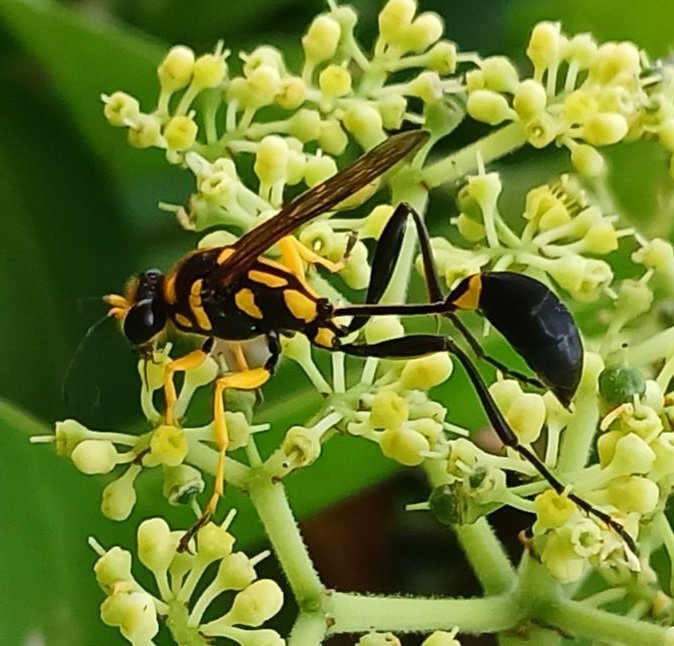
Between our heliconia plants and the emperor's walking sticks, a vine-like weed grew with white inflorescences and grape-like fruits.
Entre nuestras plantas de heliconia y las de bastón del emperador nació una maleza tipo enredadera con inflorescencias blancas y frutos parecidos a 🍇 uvas.
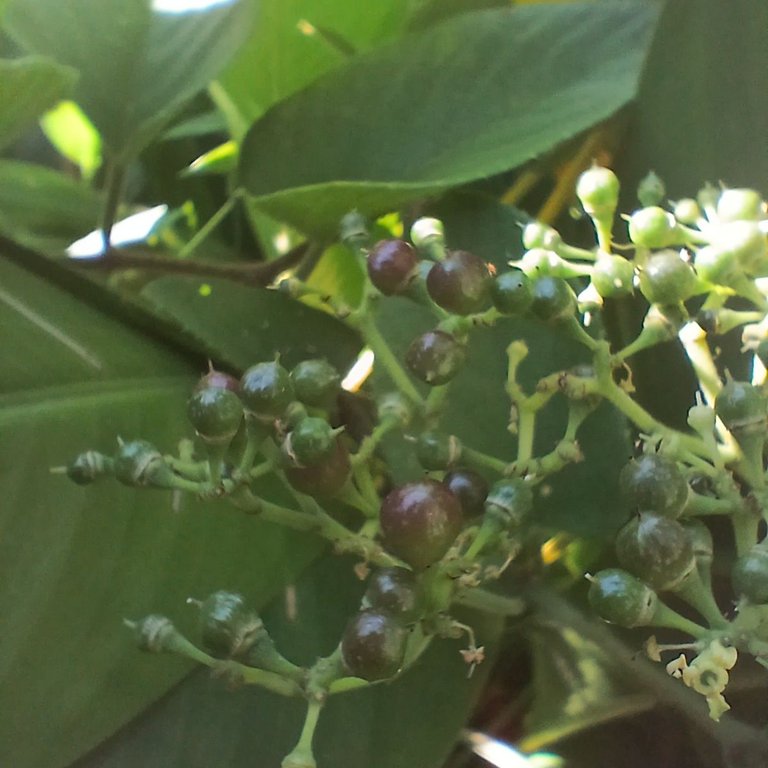
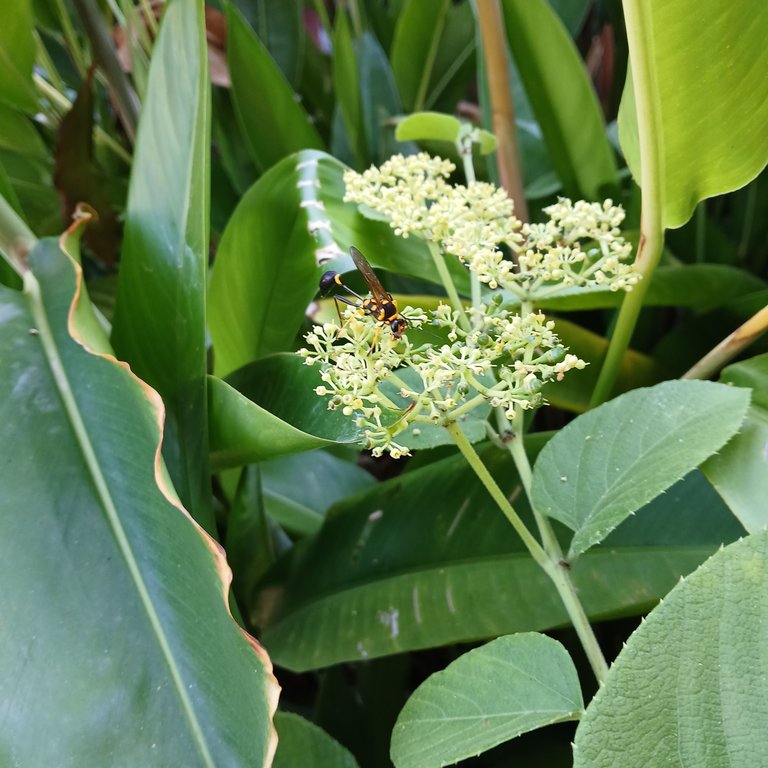
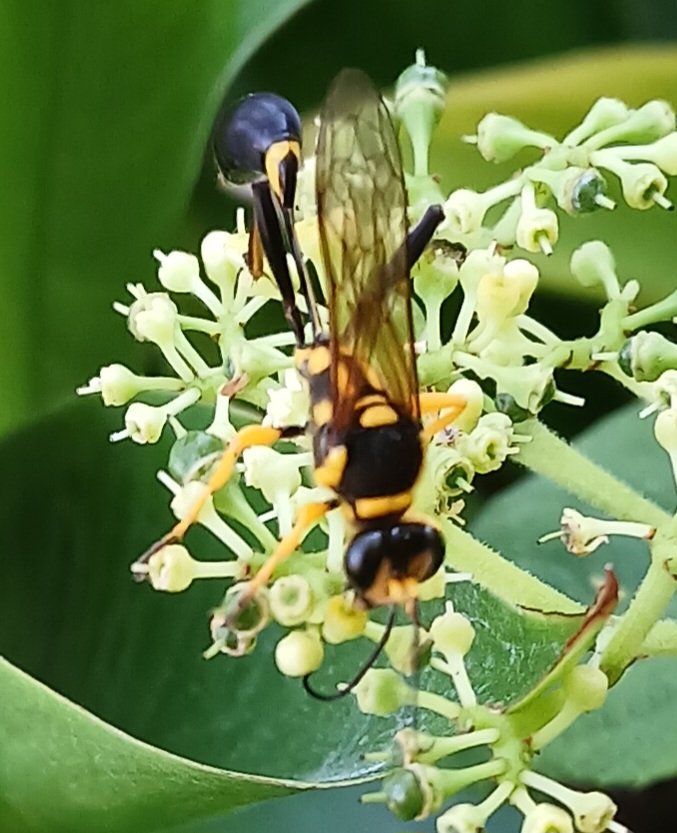
I didn't want to remove it because I was hoping it would attract butterflies. Instead, it attracted a wasp.
No quise eliminarla ya que esperaba que atrajera mariposas. En lugar de eso, atrajo a una avispa.
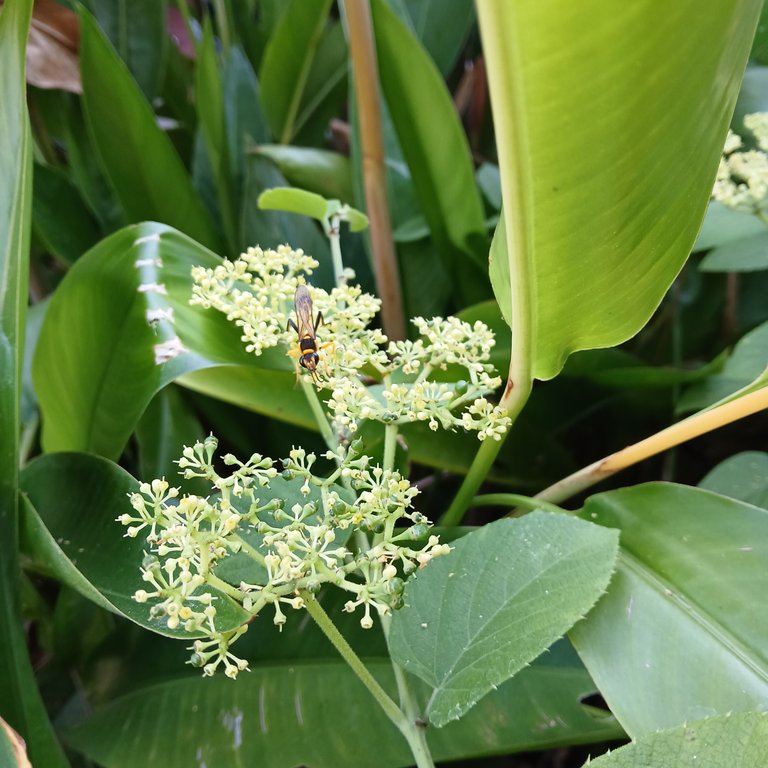
I was surprised that they also like flower nectar.
Me sorprendió que a ellas también les gusta el néctar de las flores.
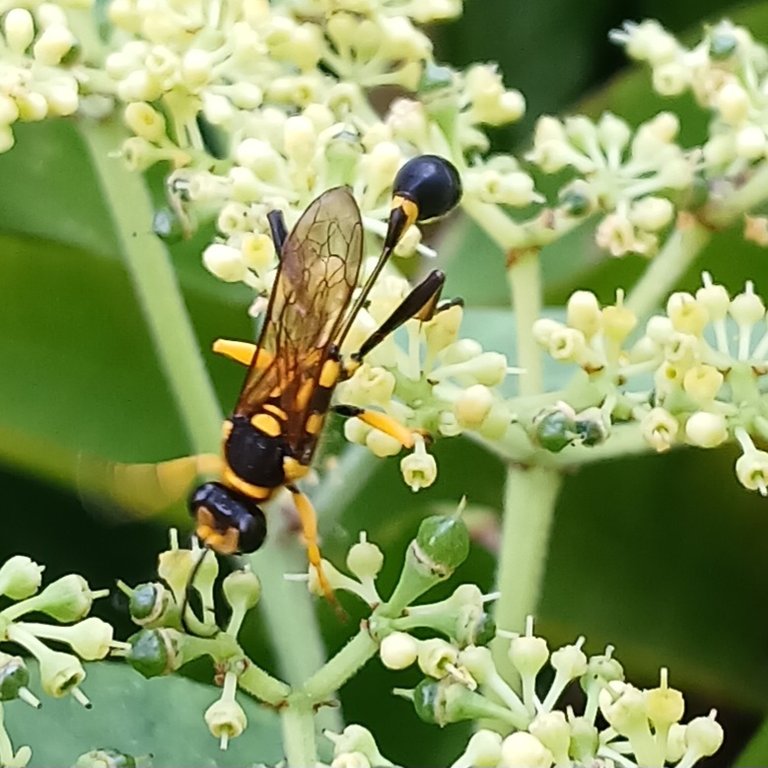
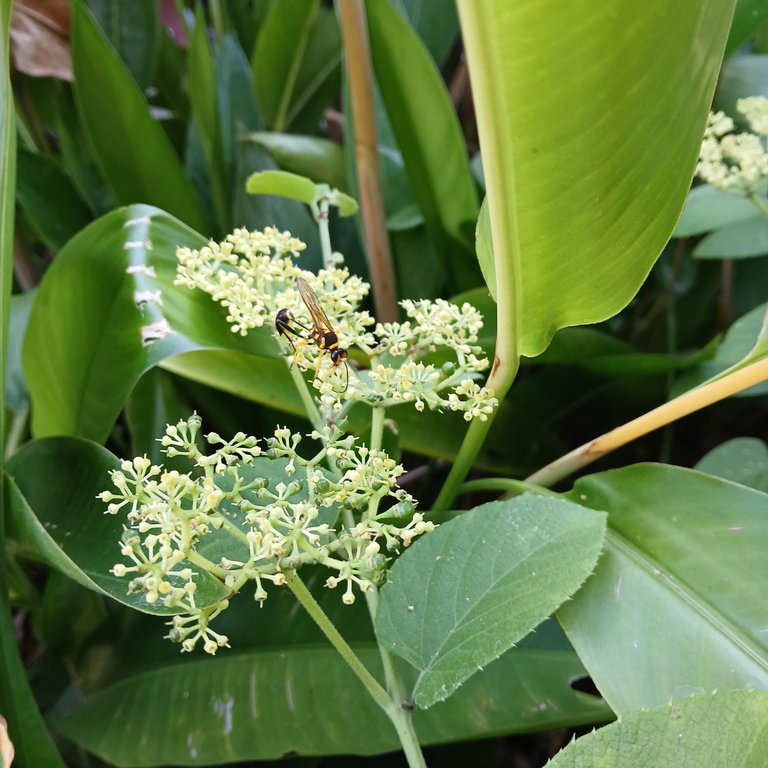
The scientific name of the vine is Cissus verticillata.
El nombre científico de la enredadera es Cissus verticillata.
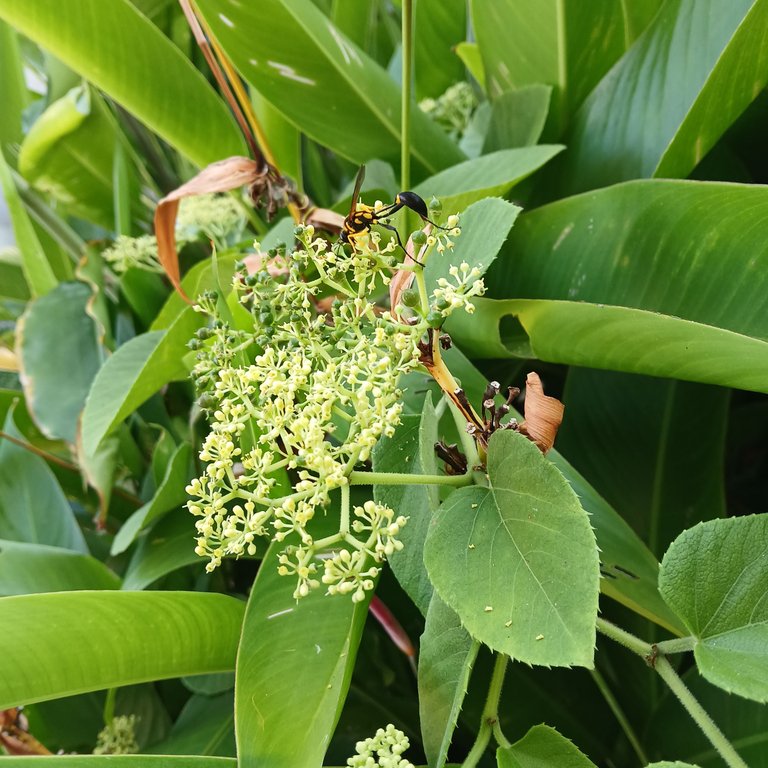
That of the wasp is Sceliphron caementarium.
El de la avispa es Sceliphron caementarium.

Also called the yellow-legged potter wasp, it is native to the Americas and has been introduced to Europe and the Pacific Islands.
Tambien llamada avispa alfarera de patas amarillas, es nativa de América y ha sido introducida en Europa e islas del Pacifico.
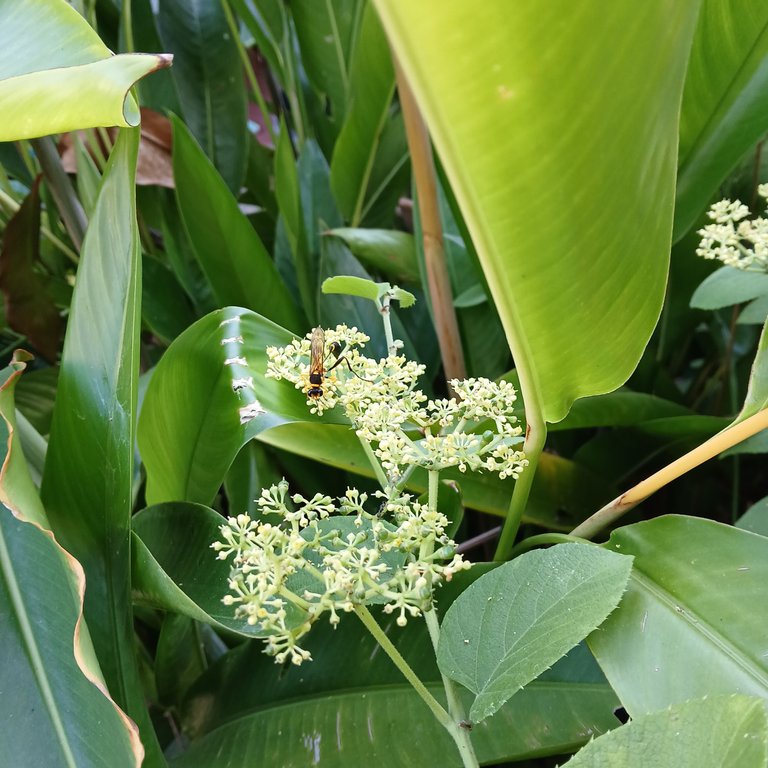
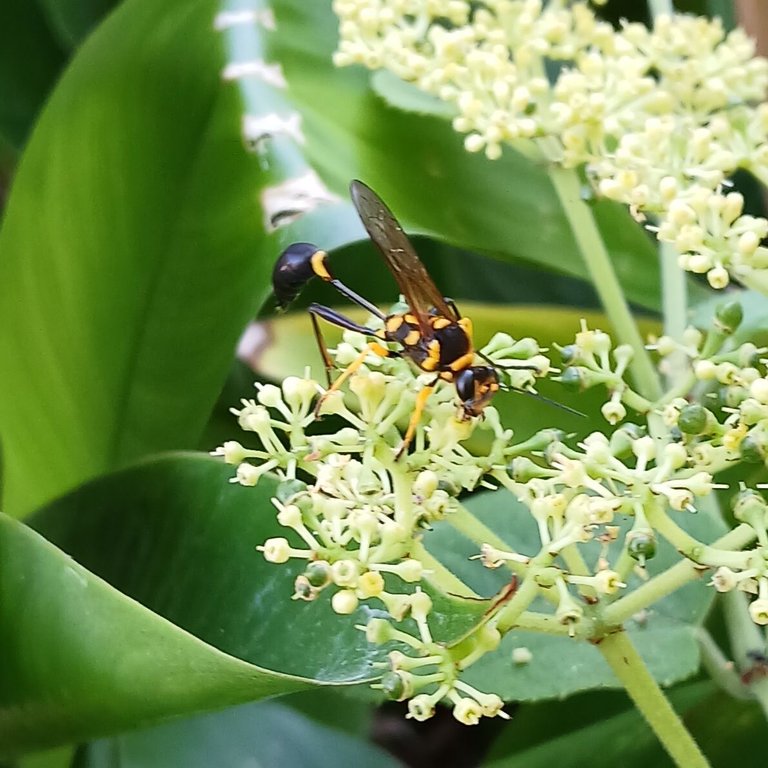
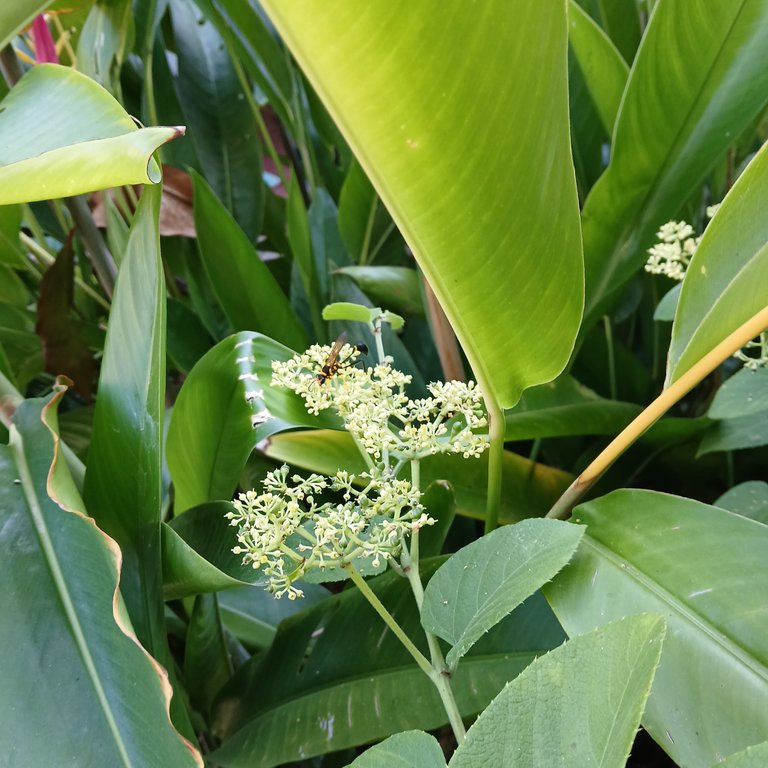
It is a predatory, solitary, and feeds primarily on spiders. Adults also feed on nectar.
Es depredadora, solitaria y se alimenta principalmente de arañas. Los adultos también se alimentan de néctar.
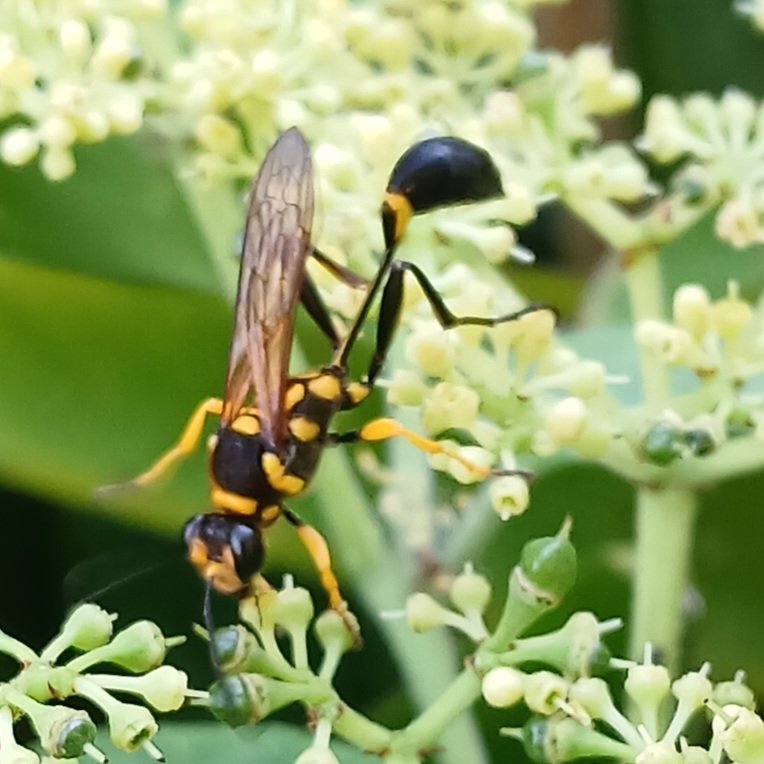
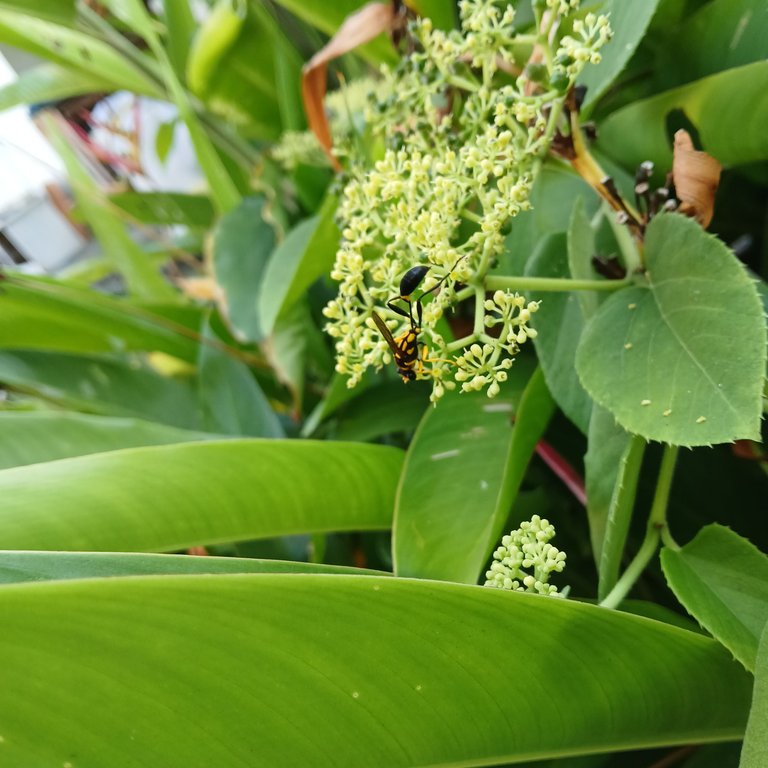
They make nests of mud, hence their name potter wasp.
Hacen nidos de barro, de allí su nombre de avispa alfarera.

They have a stinger and, despite being peaceful, they sting when disturbed or in defense of their nest.
Poseen aguijón y, a pesar de ser pacíficas, pican al ser molestadas o en defensa de su nido.
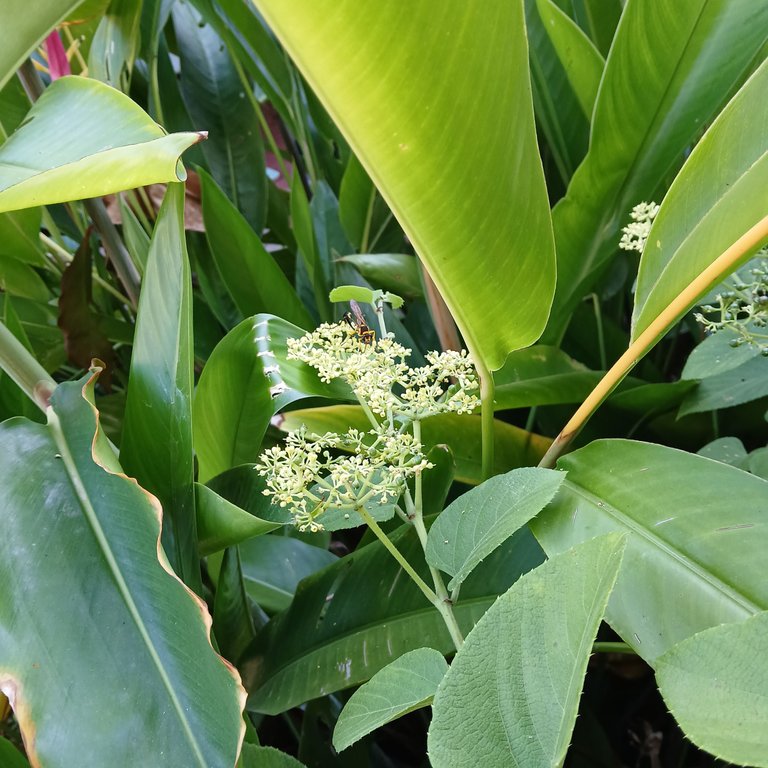
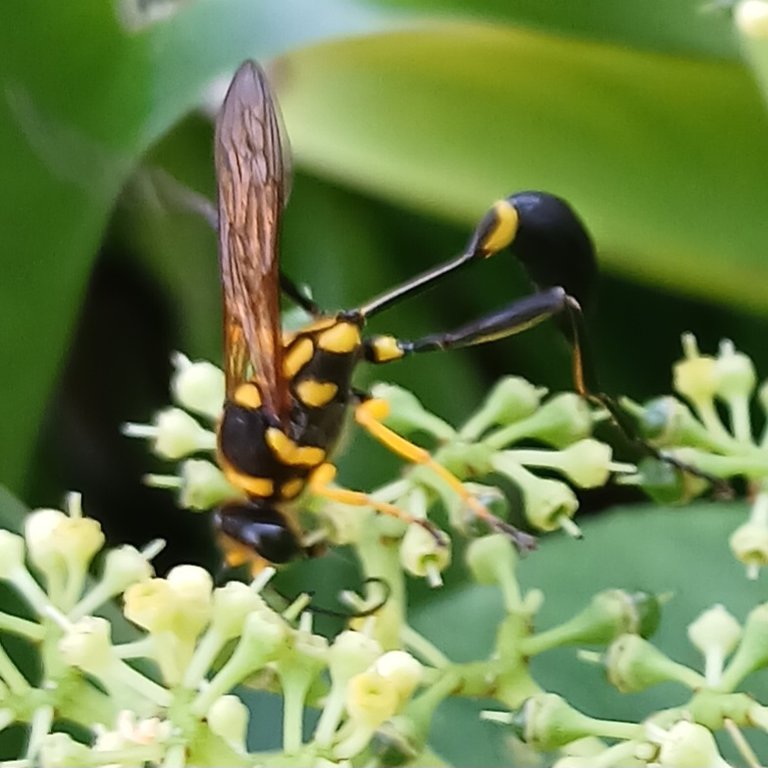
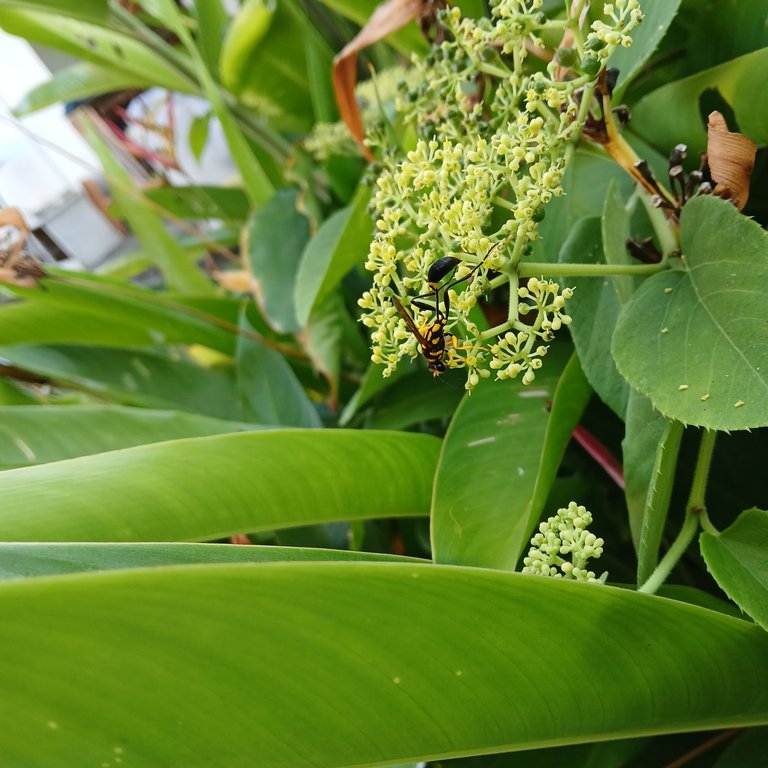

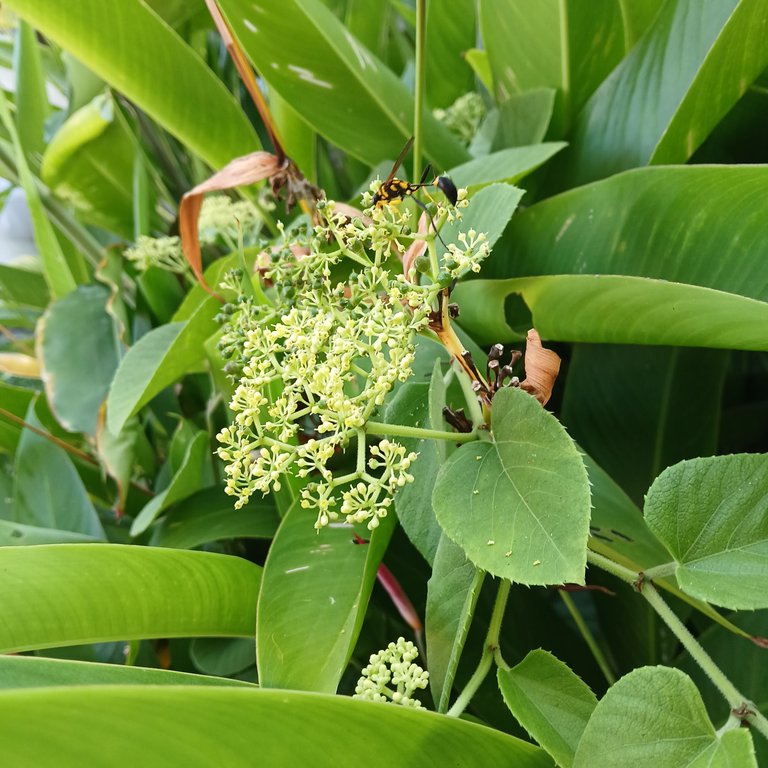

Wasps of this species are believed to have caused a plane crash in 1996 when they built their nest and blocked the pitot tube, a device that helps pilots measure airspeed.
Se presume que avispas de esta especie causaron un accidente de aviación en 1996 cuando hicieron su nido y obstruyeron el dispositivo que ayuda a los pilotos a medir la velocidad aerodinámica (tubo de pitot).

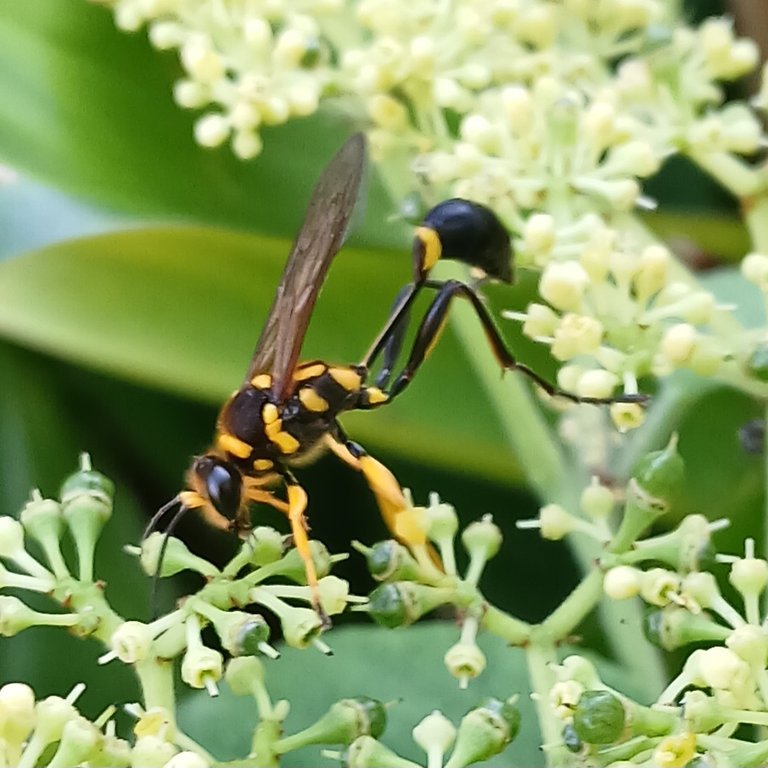
All photos were taken by me with my Samsung Galaxy A15 smartphone.
Todas las fotos fueron tomadas por mí con mi teléfono inteligente Samsung Galaxy A15.
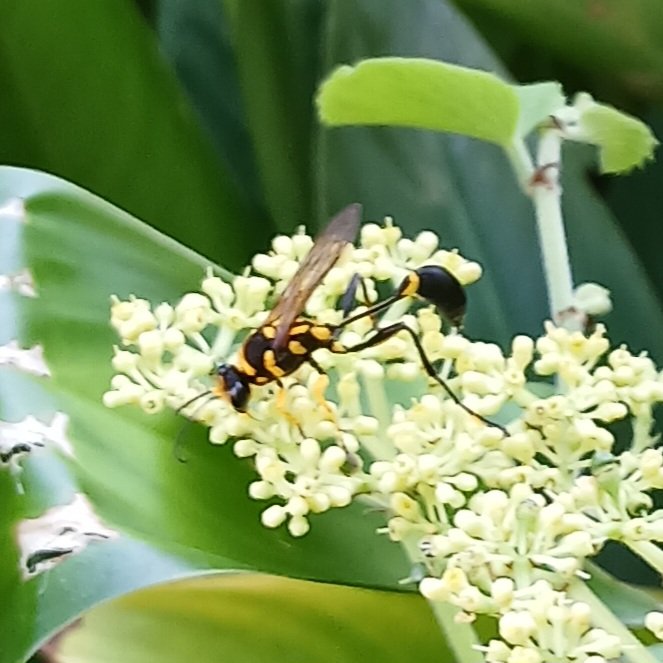

Thank you so much for stopping by and reading my post.
Muchas gracias por detenerse y leer mi publicación.

*Gif made with / Gif hecho con Canva
Translated with / Traducido con: Google translator.
References / Referencias:
http://www.conabio.gob.mx/malezasdemexico/vitaceae/cissus-verticillata/fichas/ficha.htm
https://en.m.wikipedia.org/wiki/Sceliphron_caementarium